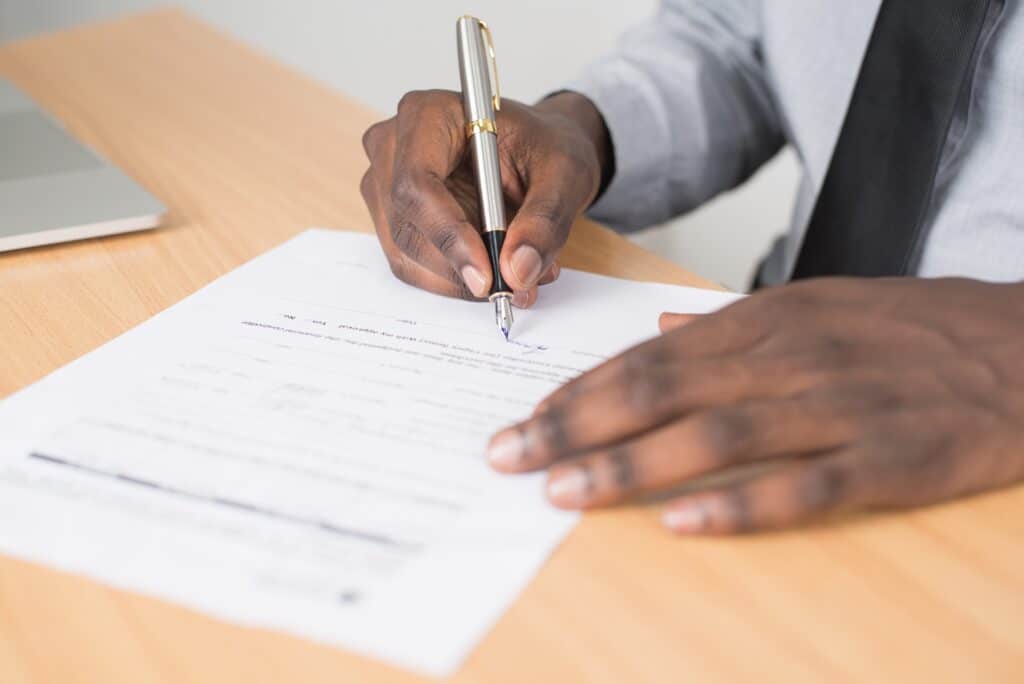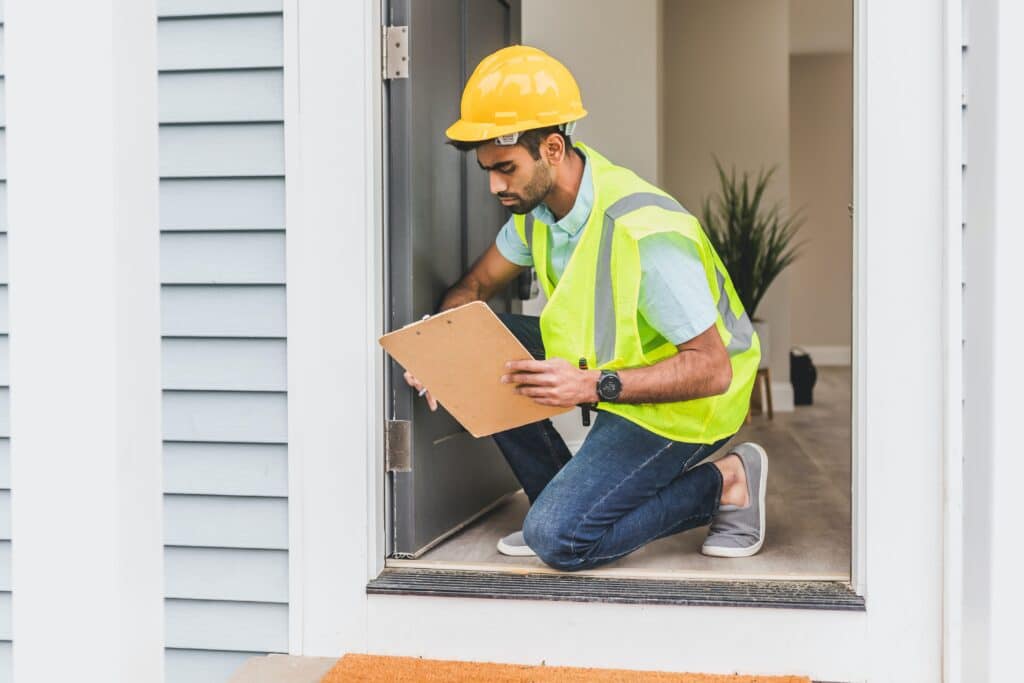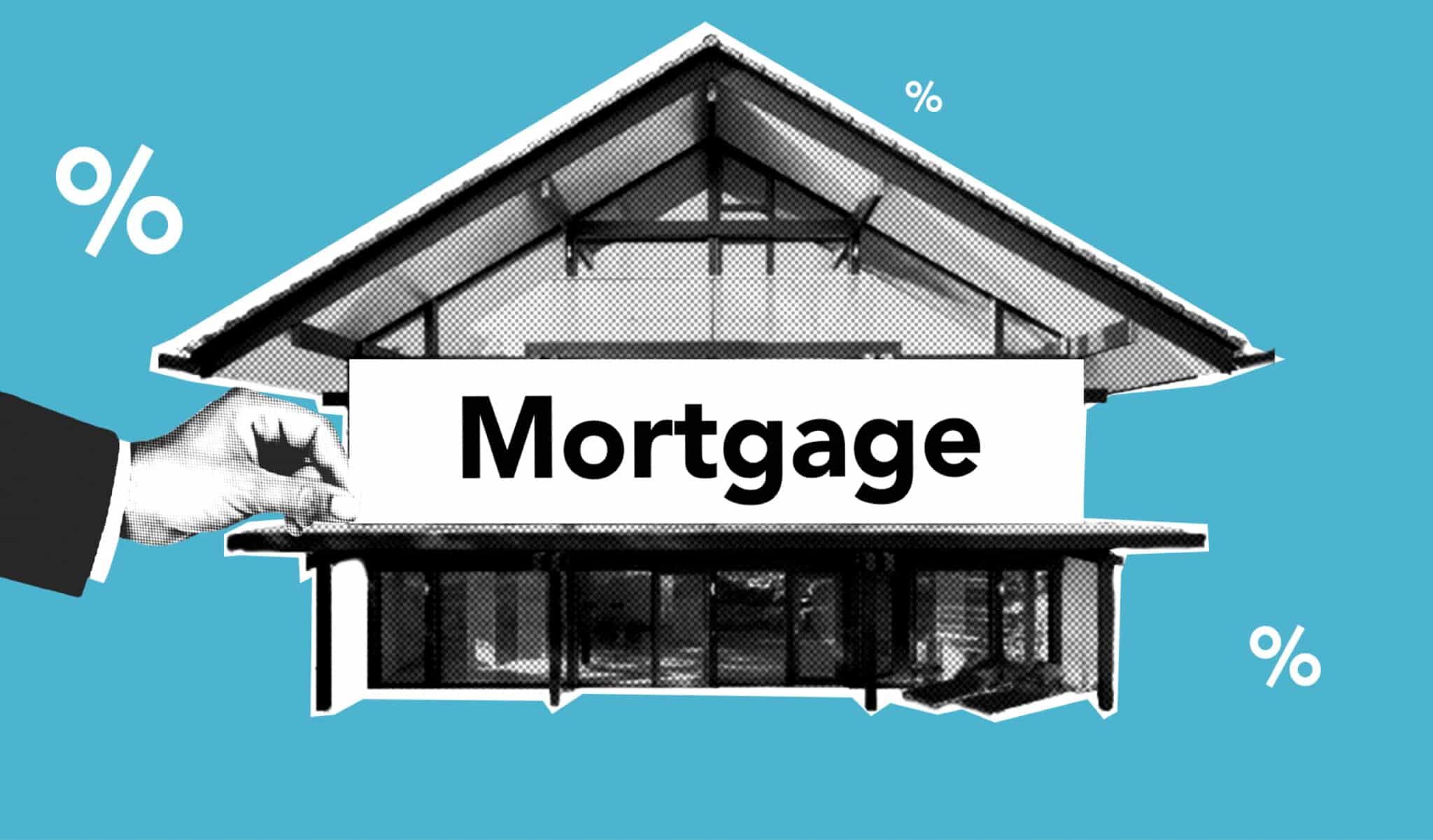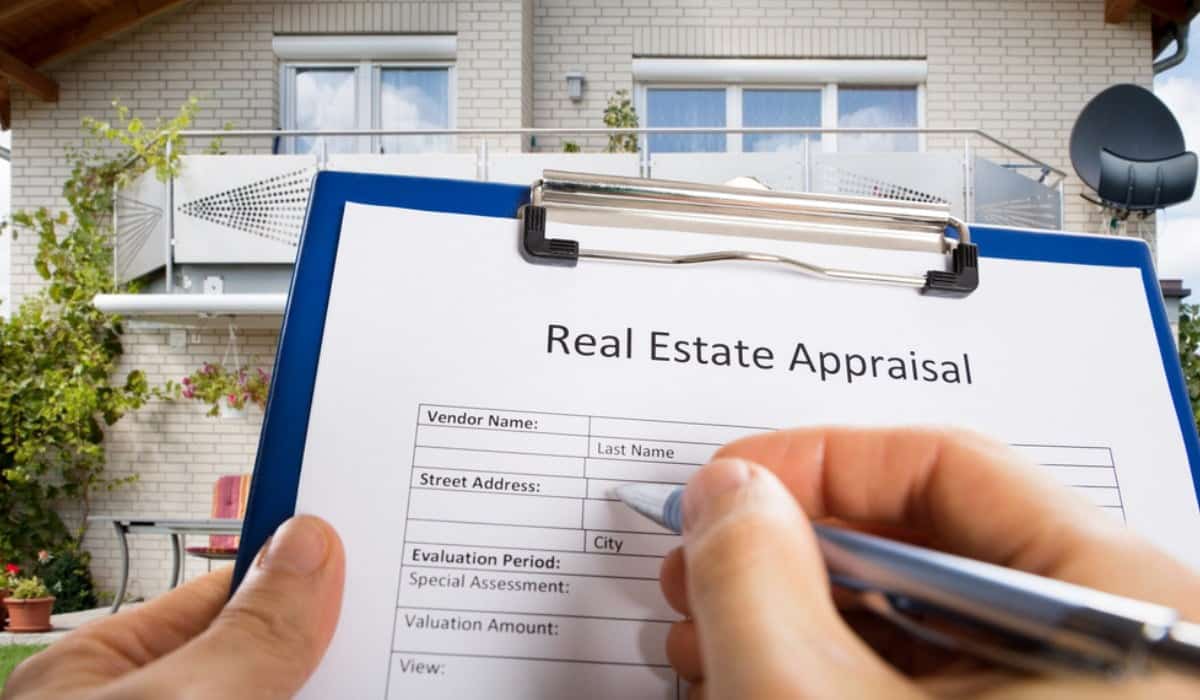What to Expect During a Home Inspection: A Step-by-Step Guide
If you’re considering buying a home, it’s essential to have a solid understanding of the process. That’s why we’ve created “Your Ultimate Guide to Buying a Home”, a comprehensive resource that covers everything you need to know, from understanding the home buying process to finding the right mortgage and navigating negotiations.
In this article, we will dive deeper into the topic of home inspections and how they play a crucial role in the home-buying process. By the end of this article, you’ll have a better understanding of the importance of home inspections, negotiating repairs or credits with the seller, and common issues found during inspections.
For a comprehensive guide to buying a home, check out “Your Ultimate Guide to Buying a Home.”

What is a Home Inspection Contingency?
A home inspection contingency is a clause in a home purchase agreement that provides the buyer with the option to back out of the contract if significant issues are discovered during the home inspection.
It is a vital protection for homebuyers as it ensures that the buyer is not stuck with a property that has significant problems, such as mold, termite damage, or a faulty foundation. Without a home inspection contingency, the home buyer also could be liable for the cost of repairing any major issues discovered after the sale.
The importance of a home inspection contingency cannot be overstated, and it is an essential aspect of the home-buying process.
Having a home inspection contingency gives buyers peace of mind knowing that they have the option to walk away from the sale if the home inspection report reveals significant issues that they are not comfortable with.
The following are some key takeaways to keep in mind regarding home inspection contingencies:
- A home inspection contingency protects buyers from significant issues discovered during a home inspection
- Without a home inspection contingency, buyers could be responsible for repairs or issues discovered after the sale
- Having a home inspection contingency gives buyers the option to renegotiate the purchase price or back out of the contract if significant issues are discovered.
In the following sections, we will dive deeper into the topic of the home inspection checklist and contingencies, why they are essential, and how they can protect homebuyers from potential problems.
Why Is It Important?
Essentially, it is a safety net for homebuyers, giving them the option to cancel the sale if the home inspection cost or reveals significant problems with the property. The following are some of the benefits of having a home inspection contingency:
- Protection from significant repairs or issues that could cost thousands of dollars: Without a home inspection contingency, buyers could be responsible for repairs or issues discovered after the sale, which could end up costing them a significant amount of money.
- The option to renegotiate the purchase price or back out of the contract: If significant issues are discovered during the inspection, the buyer has the option to renegotiate the purchase price or back out of the agreement altogether.
- Greater peace of mind knowing the property has been thoroughly inspected: A home inspection contingency ensures that the property has been thoroughly inspected, giving buyers greater peace of mind and helping to avoid unpleasant surprises down the road.
Overall, having a home inspection contingency is crucial for closing costs and protecting buyers from significant issues that could arise after the sale. By giving buyers the option to back out of the contract or renegotiate the house and purchase price, it can potentially save them thousands of dollars and provide them with greater peace of mind.

What a Home Inspection Covers
A home inspection is a very thorough inspection and examination of a property to identify any potential issues or defects that could cause problems for qualified home inspectors the buyer in the future. It is an essential part of the home-buying process, as it provides home inspectors and buyers with valuable information about the property’s condition and potential repair costs. The following are some of the elements that are typically inspected during a home inspection:
- Exterior Inspection:
The exterior of the property is inspected to identify any issues that could cause problems in the future. This inspection includes the:
- Exterior walls: The inspector will examine the condition of the walls to identify any cracks, damage, or signs of wear and tear.
- Foundation: The foundation is checked for any signs of cracks, movement, or settlement that could indicate structural problems.
- Grading: The slope of the property is checked to ensure that water is properly directed away from the house.
- Garage or carport: The garage or carport is inspected for any signs of damage or structural problems.
- Roof: The inspector will check the condition of the roof, looking for leaks, damage, or signs of wear and tear.
- Termites and mold: The inspector will check for any signs of termite damage or mold, which can cause significant problems for homeowners.
- Interior Inspection:
The interior of the property is also thoroughly inspected over several hours, including:
- Plumbing: The plumbing system is inspected to ensure that it is in good working order and that there are no leaks or other issues.
- Electrical: The inspector will check the electrical system, looking for any outdated wiring, overloaded circuits, or other issues that could pose a safety hazard.
- Heating, Ventilation, and Air Conditioning (HVAC): The HVAC system is inspected to ensure that it is functioning correctly and is free from any significant issues.
- Water Heater: The water heater is checked to ensure that it is in good working order and that there are no leaks or other issues.
- Kitchen Appliances: The inspector will check the condition and functionality of all kitchen appliances, including the stove, oven, dishwasher, and refrigerator.
- Laundry Room: The inspector will check the condition and functionality of the washer and dryer and any other laundry-related systems.
- Fire Safety: The inspector will check that the property is up to code regarding smoke detectors, carbon monoxide detectors, and other fire safety measures.
- Bathrooms: The inspector will check the condition and functionality of all bathrooms, including the sink, toilet, shower, and bathtub.
In summary, a home inspection covers a wide range of elements and is a crucial part of the home-buying and selling process itself. By using certified home inspectors to identify any potential issues with the property, buyers’ home sellers can make informed decisions about whether to proceed with the purchase or not.

After the Inspection
Once the home inspection is complete, buyers will receive a detailed home inspection checklist and report outlining any issues or defects that were discovered during the inspection. Here are the next steps buyers can take after the house inspection and receiving the home inspection report back:
- Review the Inspection Report: Buyers should carefully review the inspection report to fully understand the issues and defects discovered during the inspection. It is essential to go through the report thoroughly, paying close attention to any significant issues that could impact the property’s value.
- Negotiating Repairs or Credits with the Seller: If the inspection report reveals significant issues, buyers can negotiate with the seller for repairs or credits to offset the costs of any necessary repairs. Buyers can use the inspection report as leverage to negotiate a lower purchase price or ask the seller to make repairs before closing the sale.
- Options for Backing Out of the Contract: If the inspection report reveals significant issues that the seller is unwilling or unable to address, buyers may have the option to back out of the contract. Depending on the terms of the contract, buyers may be able to cancel the sale and receive their earnest money deposit back.
In summary, after the inspection, buyers should carefully review the full inspection results and report, negotiate repairs or credits with the seller, and consider their options for backing out of the contract if significant issues are discovered. By taking these steps with a good inspector, buyers can protect themselves from significant repair costs and make informed decisions about whether to proceed with the purchase or not.

Home Inspections: Worth the Investment?
Home inspections come with a cost, ranging from a few hundred to a few thousand dollars, depending on the property’s size and location. However, the benefits of a home inspection far outweigh the cost, making it a worthwhile investment for both home buyers and sellers. Here are some of the reasons why a professional home inspection is worth the investment:
- Avoiding Costly Repairs and Surprises: A home inspection can uncover potential issues and defects that may not be visible during a casual walkthrough or in listing photos. By identifying these issues early on, buyers can avoid unexpected and costly repairs after closing the sale.
- Understanding the Value of a Home Inspection for Both Buyers and Sellers: A home inspection benefits both buyers and sellers. For buyers, a home inspection provides peace of mind that they are making a wise investment in a property free from significant defects. For sellers, a home inspection can help identify potential issues with the property, allowing them to make necessary repairs and improvements before listing the property for sale.
- Cost-Benefit Analysis of a Home Inspection: The cost of a home inspection is a small investment compared to the potential costs of significant repairs or defects discovered after closing. The cost of a home inspection varies based on factors such as the size and location of the property, but it typically ranges from $300 to $500.
In summary, a home inspection is worth the investment for both buyers and sellers. The cost of a home inspection is a small investment compared to the potential costs of significant repairs or defects discovered after closing.
A home inspection provides buyers with the peace of mind that they are making a wise investment in a property free from significant defects. For sellers, a home inspection can help identify potential issues with the property, allowing them to make necessary repairs home maintenance, and improvements before listing the property for sale.
Who Pays for Home Inspections and Repairs: The Buyer or Seller?
When it comes to paying for a home inspection and repairs, the roles and responsibilities of the buyer and seller can vary. Here’s what you need to know:
- Home Inspection Costs: In most cases, the buyer pays for the home inspection. The cost of a home inspection can range from a few hundred to a few thousand dollars, depending on the property’s size and location.
- Repair Costs: The responsibility for repair costs can vary depending on the contract terms negotiated between the buyer and seller. In some cases, the seller may agree to make repairs before closing. In other cases, the seller may agree to provide the buyer with credit to cover the repair cost.
- Negotiating Repairs or Credits: If the inspection report reveals significant issues or defects, buyers can negotiate repairs or credits with the seller. Buyers should focus on negotiating repairs or credits for issues that could impact the property’s value or safety.
- Contingency Plan: It’s important to have a contingency plan in case unexpected issues are discovered during the inspection. A contingency plan can allow the buyer to back out of the contract if the seller refuses to make necessary repairs or provide credits.
In summary, the buyer typically pays for the home inspection, and the responsibility for repair costs can vary depending on the contract terms negotiated between the inspection company and the buyer and seller. Buyers can negotiate repairs or credits with a qualified home inspector, and the seller for significant issues or defects discovered during the inspection, and it’s important to have a contingency plan in case of unexpected findings.

Common Issues Found During Home Inspections
During a home inspection, the inspector will evaluate the property’s condition and identify any issues or defects that may impact its value or any safety issues. Here are some common issues found during home inspections:
- Electrical Problems: Electrical issues are common problems found during home inspections. This can include outdated wiring, overloaded circuits, and malfunctioning switches or outlets.
- Plumbing Issues: Plumbing problems are another common issue found during home inspections. This can include leaky pipes, clogged drains, and malfunctioning water heaters.
- Roof Damage: The roof is an essential component of any home, and damage can lead to costly repairs. During a home inspection, the inspector will evaluate the condition of the roof and identify any issues or damage.
- Foundation Problems: Foundation issues can impact the structural integrity of a home and can be costly to repair. During a home inspection, the inspector will evaluate the condition of the foundation and identify any issues.
- HVAC Problems: Heating, ventilation, and air conditioning (HVAC) problems are common issues found during home inspections. This can include malfunctioning units, dirty filters, and inadequate ventilation.
- Mold and Water Damage: Mold and water damage can lead to serious health issues and can be costly to remediate. During a home inspection, the inspector will evaluate the condition of the property and identify any signs of mold or water damage.
Addressing issues before closing on the property is essential to avoid unexpected and costly repairs after closing. By negotiating repairs or credits with the seller, buyers can ensure that any significant issues ongoing maintenance, major repairs, structural issues, or defects are addressed before closing on the property.
Conclusion
In conclusion, a thorough home inspection is an essential part of the home-buying process. It provides home buyers with valuable information about the property’s condition and can help them avoid costly repairs and surprises. Here are some key takeaways from this article:
- Understanding the Home Inspection Contingency: The home inspection contingency is an essential part of the home buying process that protects buyers in case of unexpected findings during the inspection.
- Knowing What a Home Inspection Covers: Home inspections cover a wide range of elements including the exterior and interior of the property, plumbing, electrical, HVAC systems, and fire safety.
- Negotiating Repairs or Credits: After the inspection, buyers can negotiate repairs or credits with the seller based on the findings of the report.
- Value of a Home Inspection: While a home inspection can be an added expense, it can save buyers money in the long run by identifying potential issues before closing on the property.
- Special Considerations for Older Homes: Older homes can present unique challenges during the inspection and renovation process, and buyers should be aware of these challenges before making a purchase.
In summary, a home inspection is an important investment for real estate, that can help buyers make informed decisions about a property. By understanding the home inspection process well, negotiating repairs or credits, and working with experienced real estate professionals, buyers can make the best decisions for their future homes.
To learn more about the home buying process and all the other topics involved read these!
- Pre-Approval 101: What You Need to Know Before Applying for a Mortgage
- The Importance of Home Appraisals: What You Need to Know





